Tools Required
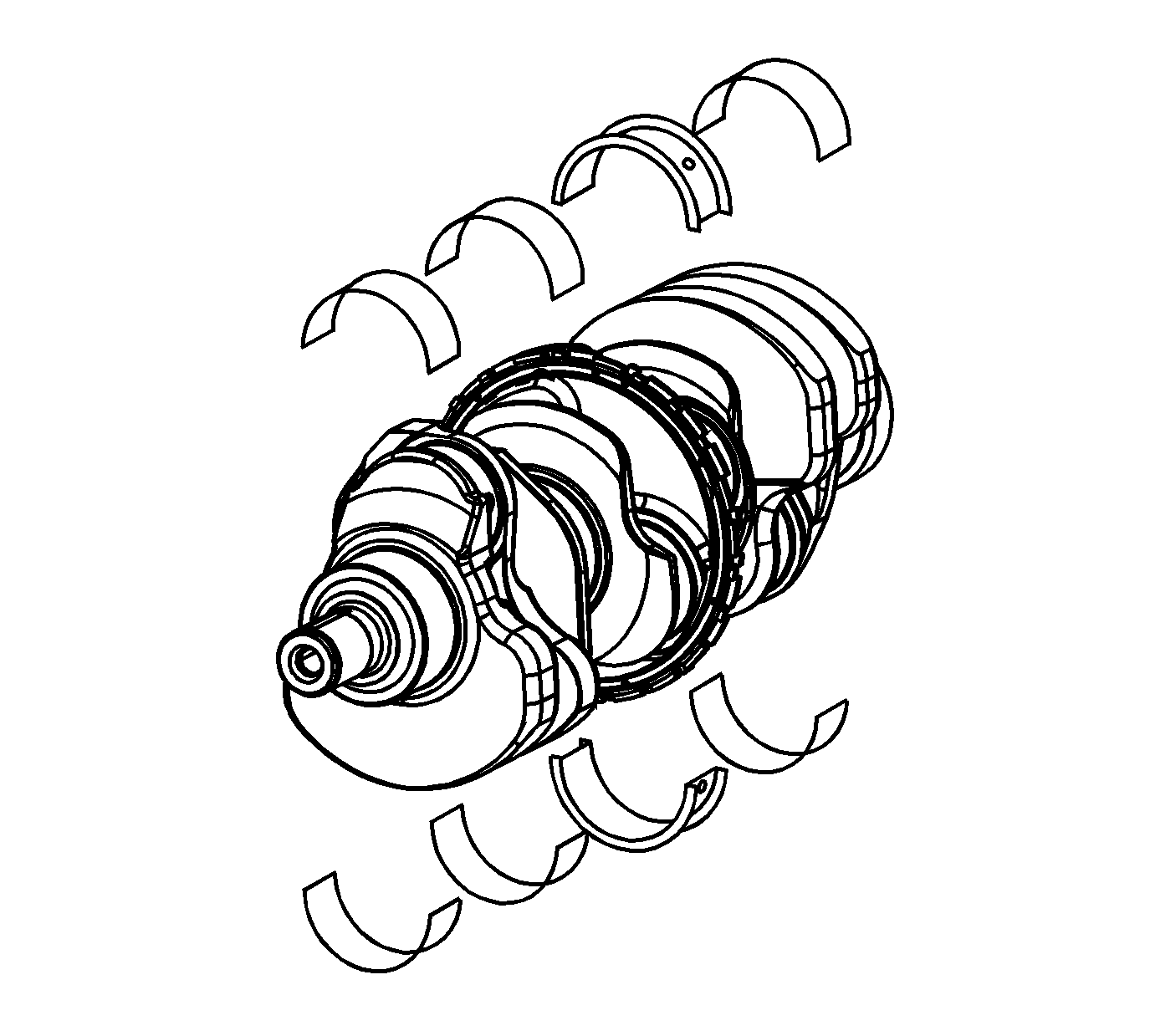
Important: Use Care when handling the crankshaft. Avoid
damage to the crankshaft position sensor reluctor wheel teeth. Nicks, burrs or other
damage to the teeth may effect on-board diagnostics (OBD) 2 system performance.
- Clean the crankshaft of the following elements:
- Inspect the crankshaft oil passages for obstructions.
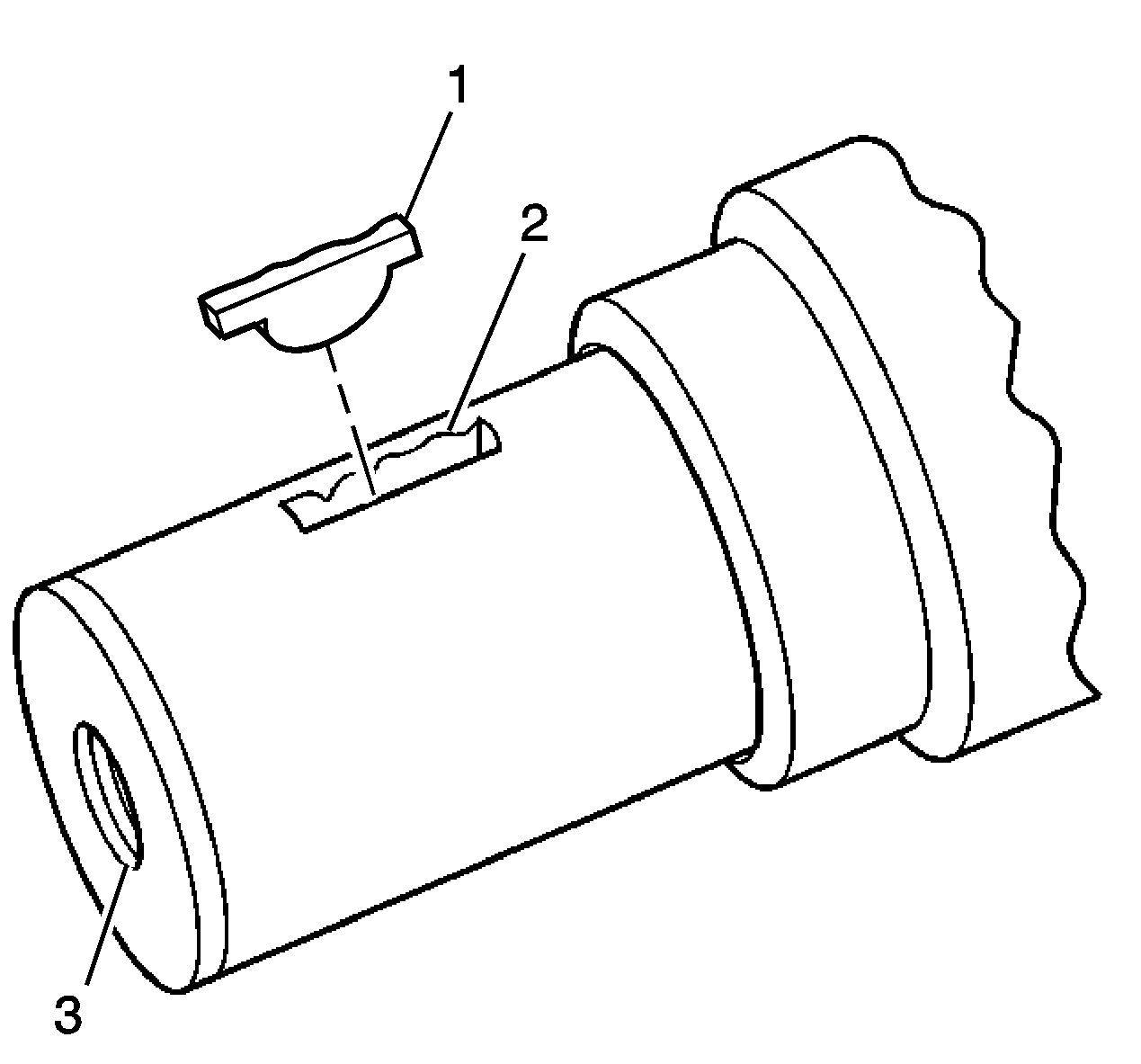
- Inspect the crankshaft keyway for the following
conditions:
| • | A worn crankshaft key (1) |
| • | A worn crankshaft keyway (2) |
- Inspect the crankshaft threads (3) for damage.
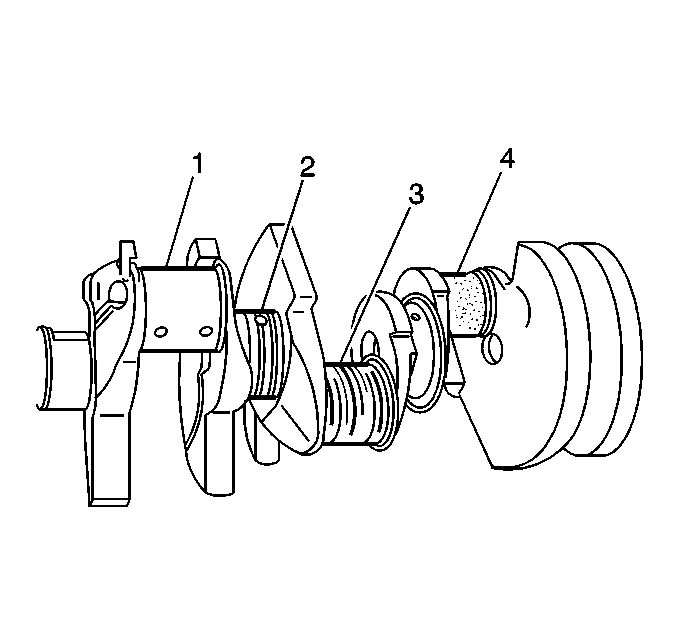
Important: If cracks, severe gouges or burned spots
are found, replace the crankshaft. Remove slight roughness using a fine polishing
cloth soaked in clean engine oil. Remove any burrs using a fine oil stone.
- Inspect the crankshaft bearing journals and the crankshaft thrust surfaces
for the following conditions:
| • | Wear without any grooves or scratches (1) |
| • | Scratches or excessive wear (3) |
| • | Pitting or embedded bearing material (4)--Inspect the corresponding
crankshaft bearing inserts for embedded material and determine the source of the material. |
| • | Overheating or discoloration |
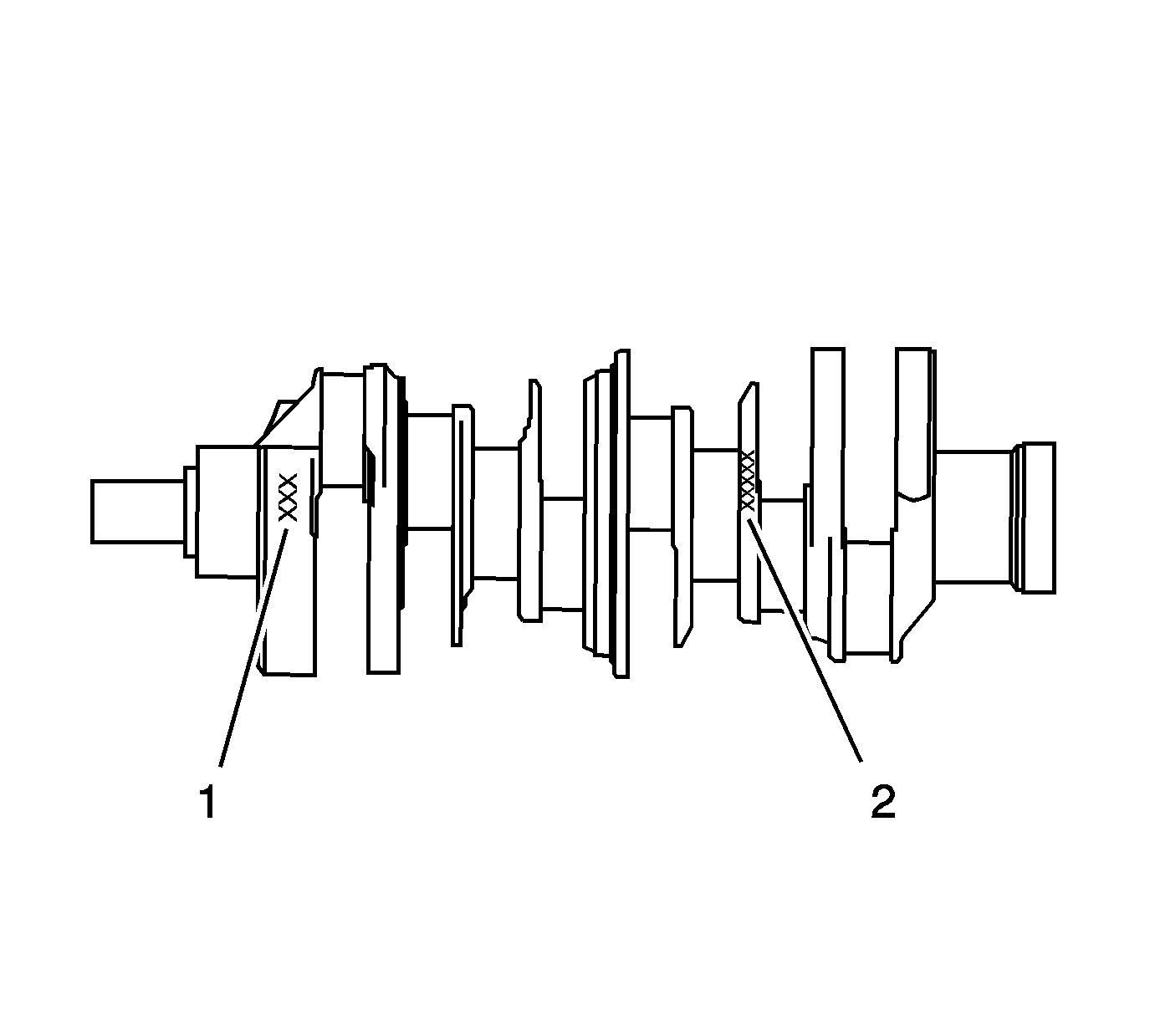
Important: This engine has been built with two available
crankshafts. It is not recommended by the manufacturer that the two different material
crankshafts be interchanged. Engine drivability and performance may be affected in
doing so.
- Inspect the crankshaft for specific materials.
| • | If the crankshaft has three digits in location (1) of the graphic
then the crankshaft is made of iron. |
| • | If the crankshaft has five digits in location (2) of the graphic
then the crankshaft is made of steel. |
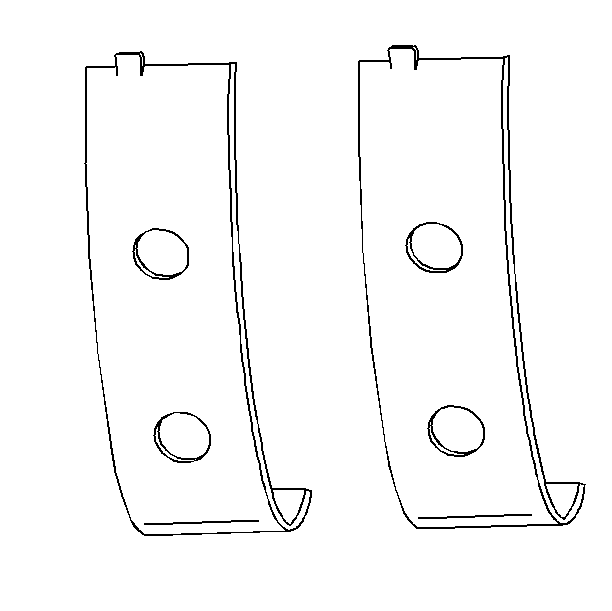
- The
crankshaft bearings are the precision insert type.
- Inspect the outer surfaces of the crankshaft bearings for the following
conditions:
| • | Wear--surface wear indicates either movement of the insert, or high
spots in the surrounding material - spot wear. |
| • | Overheating or discoloration |
| • | Looseness or rotation indicated by flattened tangs and wear grooves |
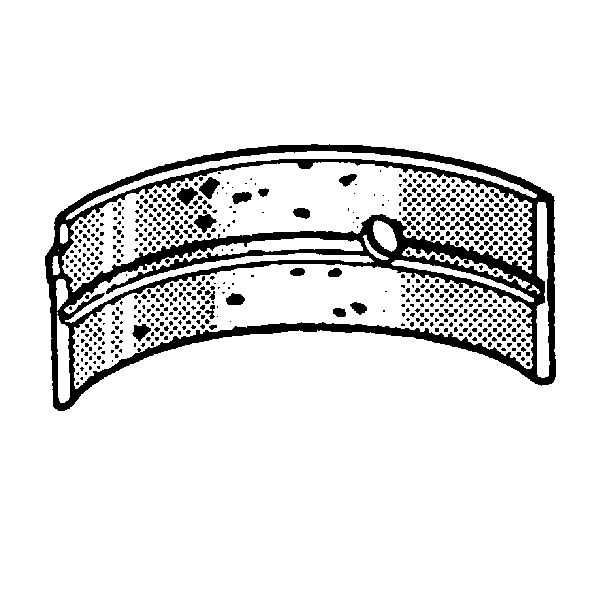
Important: Note the location of the crankshaft main
bearing high spots. If the spots are not in line, the crankshaft is bent. Replace
the crankshaft.
- Inspect the crankshaft main bearings for craters or pockets. Flattened sections
on the crankshaft bearing halves also indicate fatigue.
- Inspect the thrust surfaces of the main thrust bearing for the following
conditions:
| • | Grooving--Grooves are caused by irregularities of the crankshaft
thrust surface. |
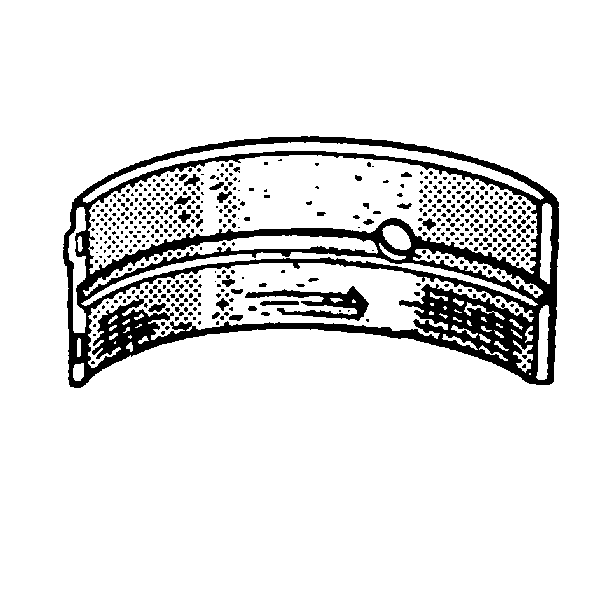
- Inspect
the crankshaft bearings for excessive scoring or discoloration.
- Inspect the crankshaft main bearings for dirt or imbedded debris.
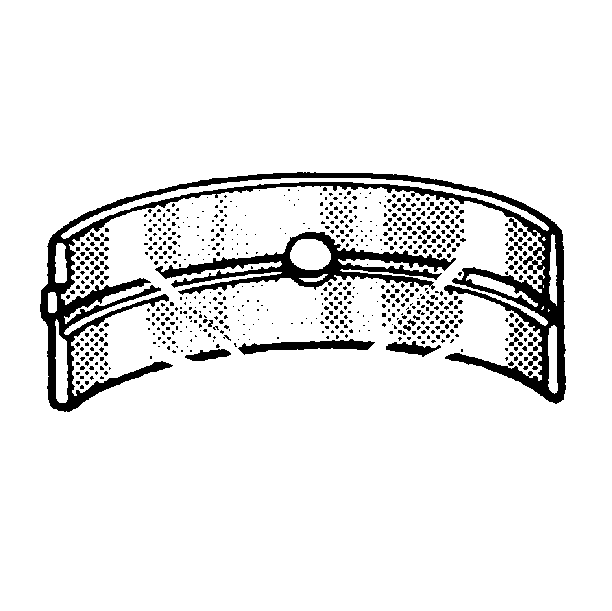
- Inspect
the crankshaft main bearings for improper seating indicated by bright, polished sections.
- Inspect the crankshaft bearings for uneven side-to-side wear. This may
indicate a bent crankshaft or a tapered bearing journal.
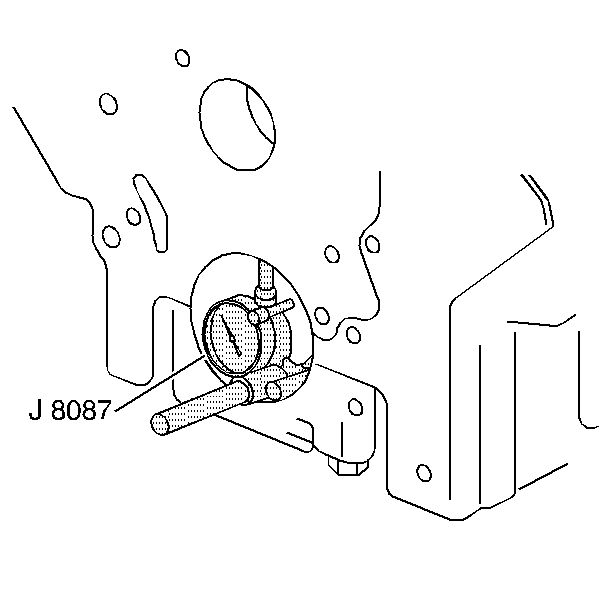
Important: If crankshaft bearing failure is due to conditions
other than normal wear, investigate the cause of the condition. Inspect the crankshaft
or connecting rod bearing bores.
- Inspect the connecting rod bearing bores or crankshaft main bearing bores using
the following procedure:
| 15.1. | Tighten the bearing cap to specification. |
| 15.2. | Use the
J 8087
in
order to measure the bearing bore for taper and out-of-round. Record the readings
for bearing selection. |
| 15.3. | No taper or out-of-round should exist. |
Bearing Selection
Measure the bearing clearance to determine the correct replacement bearing
insert size. There are two methods to measure bearing clearance. Method A gives more
reliable results and is preferred.
| • | Method A yields measurement from which the bearing clearance can be computed. |
| • | Method B yields the bearing clearance directly. Method B does not give
any indication of bearing run-out. |
Method A
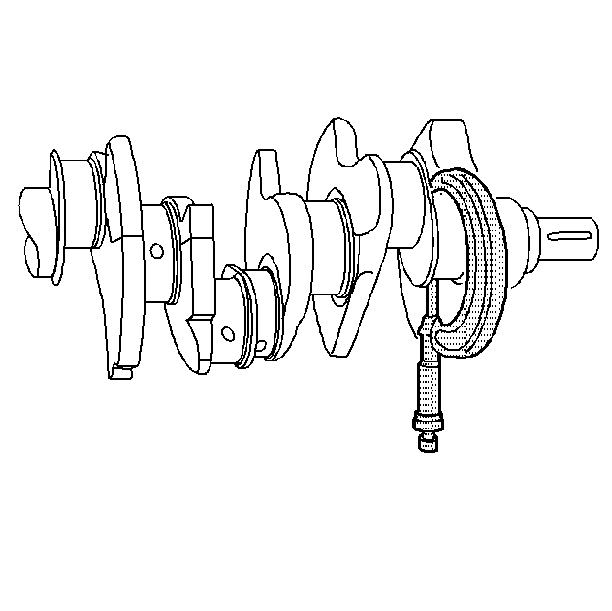
Important: Do not mix inserts of different nominal size
in the same bearing bore.
- Measure the crankshaft bearing journal diameter with a micrometer in several
places, 90 degrees apart. Average the measurements.
- Measure the crankshaft bearing journal taper and runout.
- Install the crankshaft bearing inserts. Tighten the bearing cap bolts
to specification using
J 45059
.
- Measure the connecting rod inside diameter in the same direction as the
length of the rod with an inside micrometer.
- Measure the crankshaft main bearing inside diameter with an inside micrometer.
- Select a set of bearing inserts that will produce the desired clearance.
- If the specified clearances cannot be met, the crankshaft journals must
be reconditioned and undersized bearing inserts installed.
Method B
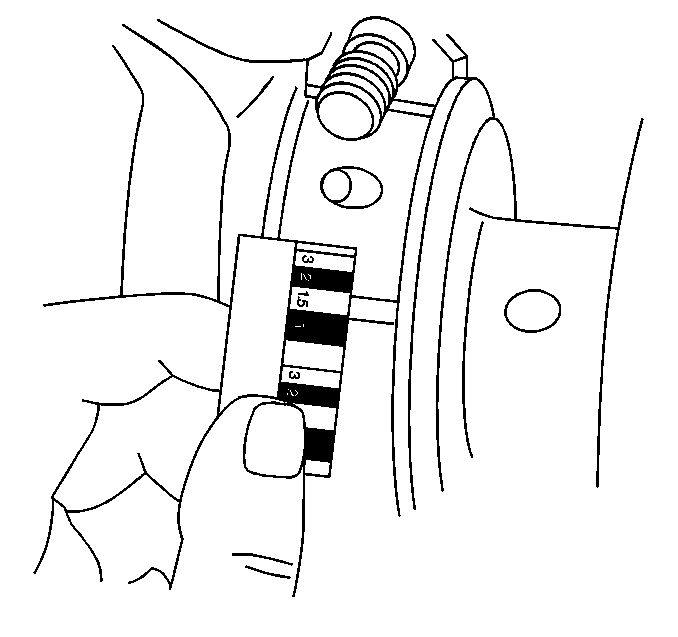
Important: Do not mix inserts of different nominal size
in the same bearing bore.
- Clean the used bearing inserts.
- Install the used bearing inserts.
- Place a piece of gaging plastic across the entire bearing width.
- Install the bearing caps.
Notice: In order to prevent the possibility of cylinder block or
crankshaft bearing cap damage, the crankshaft bearing caps are tapped into
the cylinder block cavity using a brass, lead, or a leather mallet before
the attaching bolts are installed. Do not use attaching bolts to pull the
crankshaft bearing caps into the seats. Failure to use this process may damage
a cylinder block or a bearing cap.
- Install the bearing cap bolts to specification using
J 45059
.
Important: Do not rotate the crankshaft.
- Remove the bearing cap, leaving the gaging plastic in place. It does not matter
whether the gaging plastic adheres to the journal or to the bearing cap.
- Measure the gaging plastic at its widest point with the scale printed
on the gaging plastic package.
- Remove the gaging plastic.
- Select a set of bearing inserts that will produce the desired clearance.











